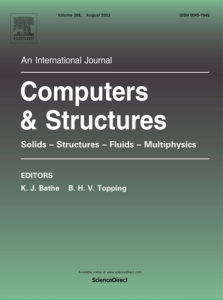Conjugate Bayesian Updating of Analytical Fragility Functions Using Dynamic Analysis with Application to Corroded Bridges

Zhang, Y., and Tien, I., “Conjugate Bayesian Updating of Analytical Fragility Functions Using Dynamic Analysis with Application to Corroded Bridges,” Computers and Structures, Vol. 270, pp. 1-20, October 2022
Abstract — Analytical fragility functions provide a way to quantify the risk of a structure. One method to construct seismic fragility curves is to perform a series of nonlinear dynamic analyses of the structure. As structural inspection data is increasing, updating fragility functions based on these measurements provides a way to translate collected data into risk-based decision-making support. However, the high computational cost in running and re-running analyses over the full finite-element model can be prohibitive. This paper presents a new methodology based on conjugate Bayesian updating to efficiently and accurately update analytical fragility curves. The reduction in computational cost from both reducing the number of analyses required and simplifying the structural complexity are investigated. The method is applied to update calculations of seismic bridge fragilities accounting for varying levels of measured corrosion. Results comparing updated fragility curves obtained from using the proposed approach versus using the full set of dynamic analyses show that the proposed method achieves accurate, stable, and more quickly converging fragility calculations. The number of structural analyses required is reduced by at least 60%, and the use of component-level analyses reduces computation time by 97% and more than an order of magnitude compared to existing methods.
Leave a Reply